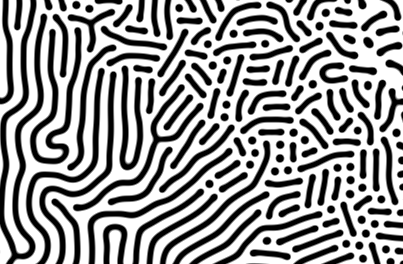Property 10 — Gradients
Gradients is introduced in
It’s not often we introduce a gradient directly, but instead we watch it emerge from how we transform the elements. However, you can plan for it if you’re aware of contradictory forces in your context. Rather than make a contrast, bring a gradient to make the transition smoother.
As forms grow in size and detail, some composition elements will seem different and gravitate toward each other while moving away from elements unlike them. In this way, a gradient will form. We see it in cultural groupings with those bridging divides, and how pebbles wash along a beach.
Other times, gradients appear when the whole is large enough to span such a distance that it interacts differently at each extreme of its presence. At one end, the set of values contrasts differently than at the other. The differing forces create tension across the whole centre, and this tension is resolved by creating subdivisions or introducing a gradient.
Steps and stairs, sizes and colours, and gradients of elements are typical of good forms. Sometimes, they are literal gradients, such as in a rising elevation. The elements across a garden form a gradient from the low, rough areas to a higher ground of beauty or elegance. The gradient needs only to be through a space. As you travel through it, some aspect must change.
Consider the gradient-like nature of
In organisations with security concerns, you might also encounter the secrecy gradient—a confidence gradient. The further into a building you get, the more locked down it is, and the more sensitive information will be present. Going from the front desk to a manager’s office to their filing cabinet requires progressively deeper acknowledgement of permission and authority.
 A fire poker has more and more details towards the handle end.
A fire poker has more and more details towards the handle end.
Gradients can also affect the density of designs. Sometimes, the detail increases because the end requires some differentiation to achieve its goals. Tools often have detailed work ends or handles for this reason, and bones have the same increase in detail at their ends. However, the concentration of detail need not be discrete like in levels of scale. It can slowly change across a dimension, such as the spots and stripes on animals.
 Reaction diffusion can increase detail gradually, akin to the spots and stripes on an animal.
Reaction diffusion can increase detail gradually, akin to the spots and stripes on an animal.
Most modern methods find realising good gradients quite demanding. Modular design works best when there are no gradual changes, so natural feeling gradients become expensive and regressive against any value this approach provides. We should not devalue gradients; instead, we should point out how modularity inhibits this property from ever appearing.